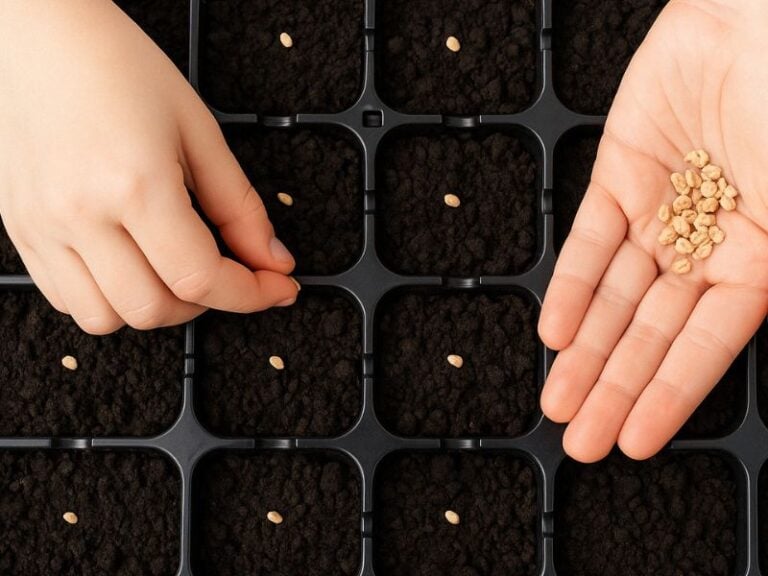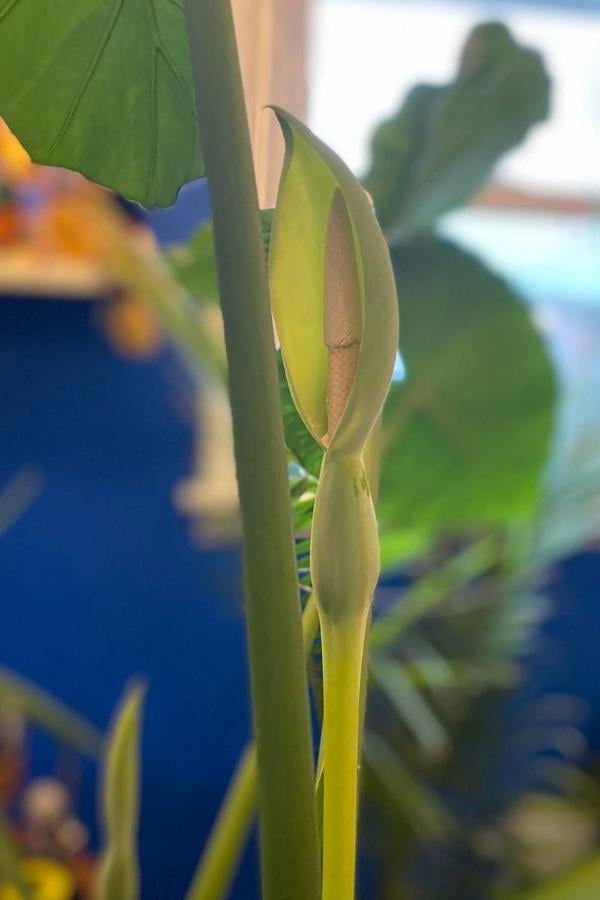Pruning Bird of Paradise correctly is necessary for their long-term health and well-being. Only through this effort can you encourage proper growth or even flowering.
Knowing the rules can make a massive difference between getting it right and wrong. You may think this is secondary, but it’s not.
If you don’t prune plants the right way, they might die. This is a good reason we should give this task the attention it needs.
However, no alarms were ringing out. Correct plant pruning does not imply virtue or gardening expertise. All you have to do is strictly follow a set of rules.
Multiple factors, such as the type of plant, the time of year, or the reason for pruning, influence this. Details that will dictate how we prune.
So let’s get into the nitty-gritty of prune Bird of Paradise properly. It will make your plant healthier and give us more and better ways to enjoy them.
Contents
- Why Do You Need To Prune Bird of Paradise
- When to Prune a Bird of Paradise?
- How to Trim Bird of Paradise
- 1. Determining the Needs of Your Bird of Paradise
- 2. Check That The Time Is Right To Prune The Plants
- 3. Make Use of The Appropriate Tools
- 4. Know the types of pruning to prune Bird of Paradise Correctly
- 5. Try To Inflict As Little Harm As Possible On The Plant
- 6. Keep A Log of Your Pruning Activities
- 7. Taking Care After Cutting Is Just As Important As Knowing How To Prune Correctly
Why Do You Need To Prune Bird of Paradise
Pruning the bird of paradise is an essential part of its maintenance. The following are the primary reasons for performing this procedure:
- The plant requires regeneration as well as faster growth.
- The requirement for regular sanitation practices
- To achieve the desired shape of the plant’s top.
- Process for renewing older leaves.
The old leaves die and fall off over time, and the branches get very long. Aside from being unsightly, the plant appears neglected.
Pruning is required to restore its beauty and allow it to grow and develop quickly.
Without pruning, a bird of paradise can’t grow a beautiful crown.
Sanitary pruning is needed to remove dead or broken branches and stop fungus from growing on the plant’s leaves and stems.
Old Bird of Paradise can benefit from pruning, which can help them live longer.
This drastic intervention triggers the rapid growth of new shoots. Afterward, the bird of paradise retains its allure for several additional years.
When to Prune a Bird of Paradise?
The spring is the best time to prune a bird-of-paradise plant. You can begin to prune the seedlings with three to four pairs of true leaves.
You need to go for heavy pruning, primarily during the growing season.
Because bird of paradise grows quickly, you can cut off the thick branches and inner branches during the growing season, mainly from the base.

The bird of paradise needs pruning:
- When it outgrows its shape
- If it gets too tall for your space, you need to cut the stem where it attaches to the main stem
- Too wide for your space
- If the plant has some leave damage from being over-fertilized or sunburned,
- Pest infestation damage.
Pruning can help improve the canopy’s airflow and light levels while also removing dead or dying branches that would otherwise consume nutrients.
Every time your bird of paradise blooms, you can cut off any leftover flowers or flower buds that didn’t open.
In the event of disease or insect infestation, old branches must also be pruned. You can prune your bird of paradise to keep it as small as you want.
How to Trim Bird of Paradise
Let’s take a step back and look at a few things first. Pruning entails causing harm to a bird of paradise.
However, it is necessary to take certain precautions to carry out this activity.
If you cut the plant incorrectly, the healing process can be difficult, if not impossible.
However, the plant’s growth may even be affected because the cut can be an entry point for fungi, pests, and bacteria that can endanger the plant’s life.
Knowing how to prune thoroughly is a simple way to avoid these negative consequences.
I am not just talking about how to cut. Pruning correctly requires more than simply putting the shears in the plant.
And there is nothing better than knowing how to do it inside and out.
1. Determining the Needs of Your Bird of Paradise
Even though it may seem like this isn’t necessary, nothing could be further from the truth. One of the things that can go wrong when caring for plants is not knowing what they need.
And it’s not just a matter of watering, temperature, and the number of hours of sunlight. Depending on its type, it is necessary to prune a plant in one way or another.
It is essential to prune the bird of paradise at a specific time, which is not the same as when to prune roses.
As a result, it is critical to understand a plant’s characteristics to avoid unpleasant surprises thoroughly.
Furthermore, it is commonly held that pruning is necessary for all plants, regardless of size or type.
Interestingly, this is not the case. Some plants and trees, like pines, do not benefit from pruning.
It can not only halt the growth of their roots, but it can also weaken the plant as a whole.
2. Check That The Time Is Right To Prune The Plants
A significant part of pruning plants is closely related to the last point.
There is an optimal time to prune for each plant, and missing this window is a surefire way to stunt its development.
If you prune your bird of paradise too soon, it might not flower as much, stop growing, or even die.
When pruning, there are two things to keep in mind. Firstly, the time when a plant begins to flower.
A spring-flowering plant will not bloom if we confront it at the end of the fall.
So for them, and with a few exceptions, you must prune as soon as the flowers are done blooming.
In the same way that the time is crucial, the temperature is equally so.
Pruning is also prohibited during the winter months, with a few exceptions.
Your bird of paradise’s wound won’t heal because it’s in a vegetative pause, and it could become infected with fungus or bacteria.
3. Make Use of The Appropriate Tools
Knowing the purpose of each pruning tool will help you select the right one for a bird of paradise, making pruning more efficient.
You can only cut correctly without doing more damage to your plant if you use the proper tool.
You need a pair of highly sharp scissors or a knife to prune your plant correctly. My go-to cutting tool is a pair of scissors. You can use the knife on smaller stems.
Nothing beats having examples to help you understand it better.
For instance, pruning small branches with powerful tools often breaks more than you intended.
4. Know the types of pruning to prune Bird of Paradise Correctly
Here we come to the most crucial tip for pruning Bird of Paradise. Not all pruning methods are the same, and not all plants require the same pruning.
So, once we’ve done our homework and found out what your plant needs, you’ll have to prune it in the way it needs at each time of the year.
As previously stated, pruning bird of paradise involves more than just cutting. Pruning serves a purpose, and understanding the various pruning methods allows us to provide your plant with the care it requires.

- Training pruning: Intended for young Bird of Paradise plant. It intends to build a concrete plant structure. This type of pruning will shape the plant to your liking.
- Cleaning pruning: Getting rid of dead or broken branches after winter or, depending on the plant, when fall comes.
- Flowering pruning: Intended to clean the plant and encourage abundant flowering.
- Pruning after flowering: Your bird of paradise may need some post-bloom pruning. It will help to strengthen the plant.
- Rejuvenation pruning: is done on old bushes and trees that have grown out of control because they haven’t been pruned regularly. I’d have to get as close to the soil as possible when chopping away the old leaves and branches.
5. Try To Inflict As Little Harm As Possible On The Plant
This comes down to knowing how to prune the bird of paradise correctly. The best way is to always cut at a 45° angle with very sharp scissors.


Please do not cut it in a straight line. If the tools are not sharp enough, you’re going to bruise the plant.
6. Keep A Log of Your Pruning Activities
Regular pruning ensures the proper growth of your bird of paradise. Many of the problems that plants face as they mature can be avoided only if we intervene early in the lifecycle.
7. Taking Care After Cutting Is Just As Important As Knowing How To Prune Correctly
The final factor to consider is crucial to the health of your bird of paradise. It is just as essential to help the plant get better after hurting it.
The best way to do this is to put a healing paste on each cut made by pruning. Applying the cinnamon powder to wounds helps keep infections at bay as nothing else can.






